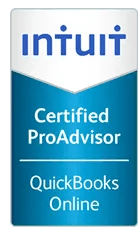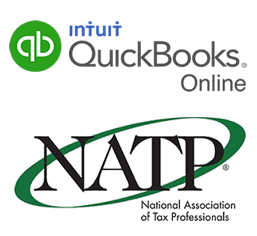Let's Get Connected
Fill out our short questionnaire to see
if we are a good fit!
Blog
Educational Resources
Tax Tips and Videos

 Show More
Show More

By Renee Daggett
•
June 28, 2017
Usually some part of the statement is true; however, there is always more to the story or it may not apply to that person’s specific situation. Who has heard the statement, “You can’t deduct a loss from business if it is more than 3 out of 5 years.”? Well, this is not the entire truth. A person that conducts an activity for profit is allowed to deduct the expenses that are ordinary and necessary in that industry. If the expenses exceed the income, the amount can offset other income such as wages, interest or dividends. However, if your activity is a hobby, you cannot reduce your other income by the losses. When your losses exceed the 3 year rule, the burden of proof now shifts to the taxpayer to prove the activity is a for-profit business. Here are some factors to consider: The manner that you carry on the activity The expertise of the taxpayer in this industry The time and effort spent in the activity The taxpayers history and success in this industry The elements of personal pleasure or recreation Here are some ways to ensure your for-profit business is not considered as a hobby : Keep thorough and business like books 2. Use a separate business bank and credit card account(s) Log any personal use on assets, such as a camera Research trends in similar businesses Obtain insurance, registrations, certifications, licenses needed for that type of industry Maintain a second phone listing for business Document evaluations of your operation to attempt to improve the business’s profitability Develop a written business plan and update it annually Keep a detailed calendar of your business activities I had a client that had a business of being a personal chef. This was not his primary way of earning income. He had a W-2 job with a local city. He did earn about $200-300 in income; however, his expenses were much more than that. Come to find out, he was hosting dinner parties at his home and wanting to write off the food, subscription to cooking magazines and seeds for his home garden. If you are in doubt, just imagine yourself in front of an auditor explaining your specific situation. If it “feels” like the story above, it may not fly with the auditor, but that does not mean it is not a true business. What you need to do is plan and strategize. What can you do today to prove that you are a for-profit business? Know the rules and then step out in confidence. And, don’t get tax advice from a friend because it might not be the whole truth! Consult your tax preparer to confirm your specific situation qualifies!

By Renee Dagget
•
May 17, 2017
A few months ago I took my son for a checkup at the doctor's office. Even though I had written confirmation of our appointment time, the office was crowded with several other patients who also had appointments at the same time. The office staff admitted they made a scheduling mistake, told us we would not be seen that day and still insisted we pay our deductible up front. Then they sent us home, without so much as an apology. When I got home, I told my husband that the doctor’s office was terrible to deal with and I wanted to search for a new doctor. This frustrating experience made me think that in this age of social media and online reviews, all business industries really need to look at how their customers experience their services . It's a hard thing to do; even industries that are known for providing good customer service, such as retail and hospitality, don't always get it right. How do your customers feel when they use your products or services? During a recent family trip, I stayed in two different hotels where the customer experience was dramatically different. The first hotel provided a continental breakfast each morning, which included cold cereal, muffins, hard-boiled eggs, waffles and coffee. The first morning, I went down to the dining room to have breakfast to find a half gallon jug of milk in the refrigerator with only about an inch of milk left. No staff was present to replenish the food. The eggs were peeled and under a plastic dome, and the waffle batter was in small cups to pour onto the grill. Since there was no one around, the food just did not seem appetizing to eat; therefore, we went to the local diner to have breakfast. The next couple days, I faced the exact same issue with this hotel's unappealing continental breakfast! Where was the hotel's concern for their customers' experience here? The next hotel too had a continental breakfast, but what a difference! There were 15 people in the room eating and two staff members constantly cleaning tables and restocking the food. There was PLENTY of milk for my cereal! After breakfast, we walked across the parking lot to our room, and I noticed three buckets labeled “clean towels," "dirty towels" and "water.” The hotel had put them out so that the travelers could wash their windshields with clean towels instead of paper towels. This small gesture sure sunk in with me. So I searched my mind…Am I providing good customer service? How hard do my clients have to work to get the value out of the money they spend with me? Where in my business do I only provide a half gallon of milk to my clients and have them think, “Really, that’s all I get?” How can I make sure they experience the extras of having clean towels available to wash their windshield after many miles of traveling? Providing good customer service has to be intentional. Think about how your customers or clients feel when they work with you. Yes, you have to master the basics in your trade, but you also need to think about some extras that you can do that don’t cost a ton, but really speak volumes in caring about your customer’s needs . My staff and I constantly look for ways to enhance our client's experience. We also focus on the finishing touches that show we care . We send hand-written notes, birthday cards and thank you gifts to our clients. We return their phone calls and confirm their faxes within 24 hours of receipt. We also try to make our processes be as simple as possible for them. What customer service improvements can you implement this week?
Recent Blog Articles
©
2001 - 2025
©
2001 - 2025
AdminBooks TM, Inc. All Rights Reserved.
Site created by
Tafgraphics Design Studio, Inc.
Tafgraphics Design Studio, Inc.
We use cookies to ensure that we give you the best experience on our website.
×













